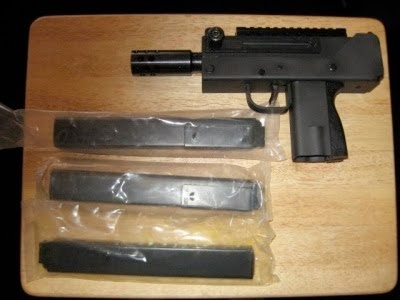

45-caliber pistols if they chose, and Jacksonville solved the argument by leaving the 9mm and adopting Glock. Both went to lighter and faster 9mm loads the LVMPD also authorized officers to carry. Some, such as the Las Vegas Metropolitan Police Department (LVMPD) and the Jacksonville, Florida, Sheriff’s Office (JSO), were disappointed with the results. Some agencies like the San Diego Police Department were happy with 147-grainers and stayed with them. Running at 950 to 1,000 fps, the 147-grain bullets sometimes expanded and sometimes didn’t.

law enforcement agencies followed suit.ģ Final Things to Consider When Deciding Between 9mm vs 45 vs 40 Of course, the FBI is to American police leadership what the Harvard Business School is to Fortune 500 executives, and when the Bureau adopted these 147-grain subsonic rounds as its standard 9mm load, many U.S. He had found that the bullet penetrated deeper (14 inches in his particular formula of ballistic gelatin, which he had developed to replicate swine muscle tissue) than the 115-grain 9mm loads of the period. Fackler impressed the Bureau with his laboratory assessment of the 147-grain Winchester Olin Super Match (OSM) load, which had been developed originally for precision accuracy out of the suppressed HK MP5 9mm submachine guns used by some elite military operators. 40 S&W pistols simply because, some insiders say, the FBI recommended it at the time.Īt the FBI Wound Ballistics Symposium in the late 1980s, Dr. The department eventually transitioned to. But when those pistols were loaded with 115-grain hollow points at the +P+ velocity of 1,300 fps, troopers and command staff alike were happy with how swiftly solid hits ended gunfights. 357 Magnum earned a reputation of being a more decisive “man-stopper.” The Illinois State Police was not happy with the performance of 100- to 115-grain, standard-velocity bullets in the 9mm S&Ws that for decades were their signature guns. 357 Magnum uses bullets the same size as a. 22 Short bullet that strikes between the eyes may be excellent shot placement, but if the projectile stops there without entering the cranial vault, no wound has been placed where it is likely to cause instant cessation of violent activity. Wound placement involves the track of the bullet until its trajectory stops. Historically, shot placement has meant where the bullet strikes, whether it is the 10-ring of a target or the bridge of an opponent’s nose. To be semantically correct, “wound placement” should probably be the term we use, not “shot placement.” Shot placement is the first priority in rendering a homicidal opponent incapable of continuing to harm others. This is probably the only issue in this complicated argument the debaters seem to agree upon unanimously. The mechanism of wounding and destroying tissue takes second place to shot placement not how the bullet damages tissue, but what tissue is rendered inoperable. They could on any given day have borrowed the other man’s preferred rifle and still come home with a deer. What was overlooked was that each man was a highly skilled rifle shot. 270 Winchester rifle cartridge, and Elmer Keith, who was a vociferous advocate of large calibers and heavy, slow-moving bullets. In the hunting world, a debate lasted for decades between master hunters Jack O’Connor, who did much to popularize the light, fast. 45 is about 60 percent more than made by the 9mm.” 9mm vs. 355, take half that, the radius, square that, and what you’ll find is that the volume, or the area, of damaged tissue made by the. What does is the area of a circle, or pi-r-squared. But how much bigger, by diameter, really doesn’t give you the measure of how much tissue it disrupts. Fackler said, “The size of the hole the bullet makes, the. Martin Fackler was a huge influence in the field of wound ballistics, and much of the FBI protocols in this regard follow his principles. 357 Mag round were able to score consistently above 90 percent.” Among the initial rounds tested, only the 10mm. 38 Special also achieved a 67.5 percent success rate. 38 Special fared just as poorly, and the standard FBI-issue. ‘We expected that there would be a gap,’ said Patrick, ‘but we didn’t expect it to be so large.’ In the first series of tests, the best a 9mm could do was 67.5 percent. He wrote, “As the testing progressed, another factor became obvious. 40?Īround 1990, writer Charles Petty was given unprecedented access to the FBI’s wound ballistics studies that had led to the agency’s adoption of the 10mm cartridge. The Great Ammo Debate, Part I: Which is Best Between 9mm.


 0 kommentar(er)
0 kommentar(er)
